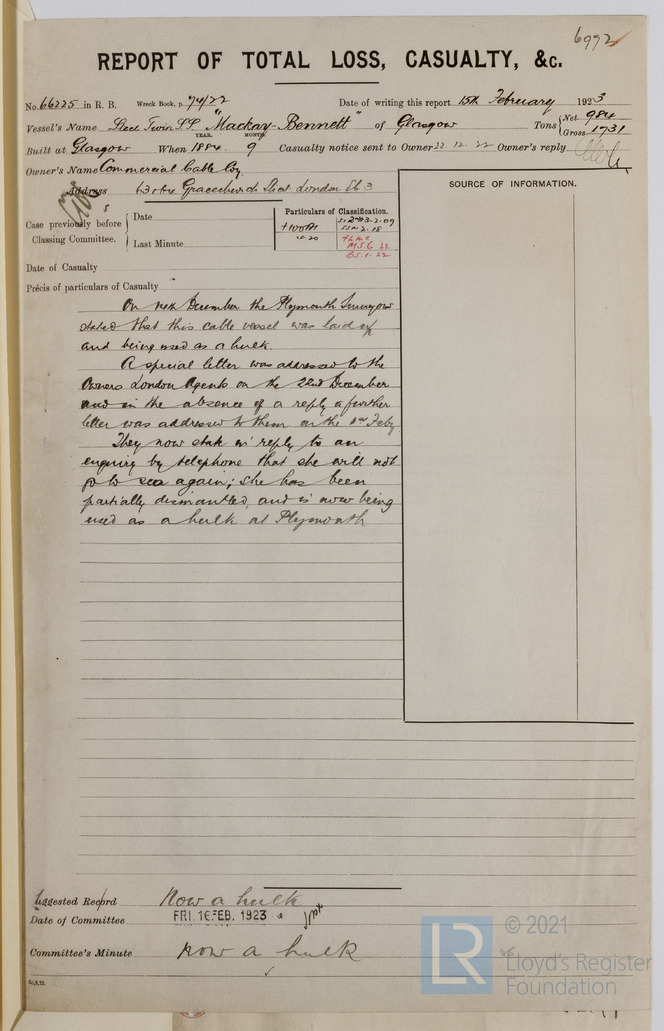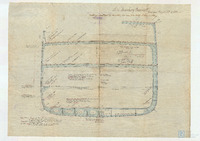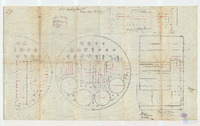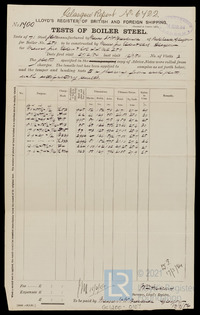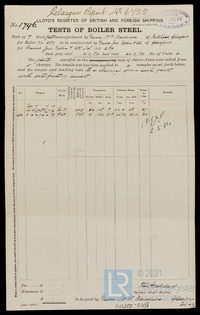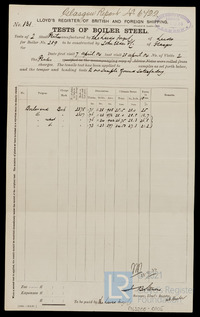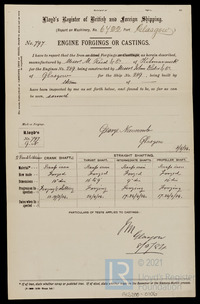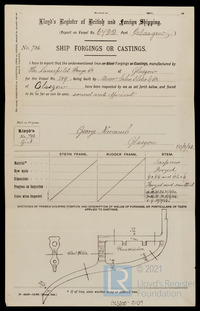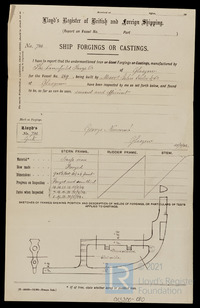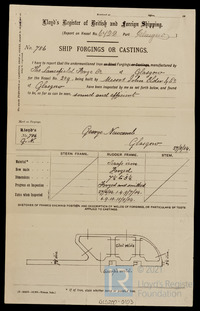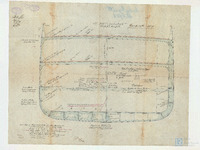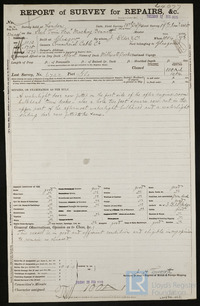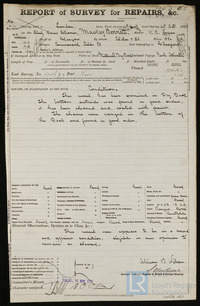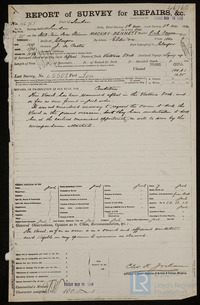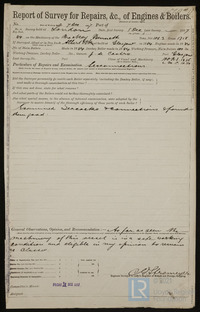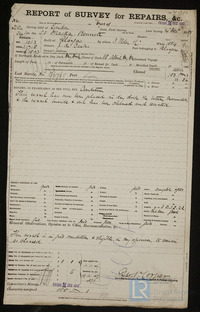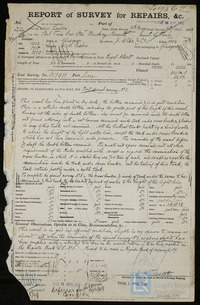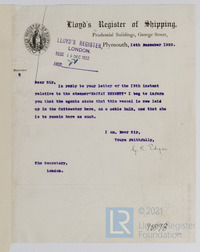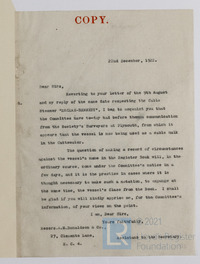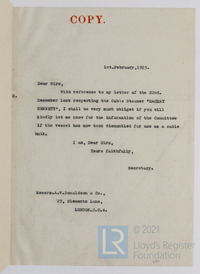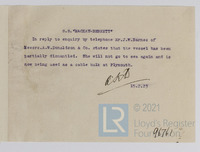- Related documents Related
- Full details Details
- Report document? Report?
Use the data export button to extract customised data sets from the Ship Plan and Survey Report Collection. Available in TSV and CSV formats.
Date recorded as the time of writing.
15/02/1923
The process of transferring a vessel to water, but not necessarily her completion.
18/09/1884
Unique identifier for a given ship, it is assigned by a builder.
289
The port or place in which the vessel’s construction took place, at the time of writing.
Glasgow
Unique internal numbers used for identifying, referring and retrieving a specific survey report.
6992
Records that constitute Lloyd’s Register’s first official encounters with a specific vessel, e.g. a survey report.
N
Classification symbol assigned to a vessel by Lloyd’s Register’s Classing Committee denoting the quality of construction and maintenance.
+100A1 4,20
Broad categories and subdivisions of vessels related to their purpose or function.
Hulk
Is the steamer assisted by sail?
No
Tonnage derived by deducting from the gross register tonnage the capacity that in unavailable for cargo, e.g. machinery space, fuel, crew accommodation etc.
984
Is machinery fitted at the aft of the vessel?
No
Generally a smaller additional auxiliary boiler (often used while the vessel is at port).
No
Name of the Proving House responsible for the public testing and certification of a vessel’s anchors and/or chain cables.
No
The year in which a vessel’s construction is completed.
1884
The individual and/or organisation listed as having been responsible for constructing the vessel. This can/may be the same as the owner and/or manager.
John Elder & Co
The name of the yard where the vessel was built.
Fairfield
A unique number allocated to a specific vessel by an official registration authority of the country of registry (flag) that the vessel belongs to (post. 1855).
89965
Official administrative title (often printed) of a record used by Lloyd’s Register or external organisations.
Report of Total Loss, Casualty, &c./ Wreck reports
The individual and/or organisation listed
Commercial Cable Co
Recorded information related to a vessel’s movements.
Plymouth
A vessel’s means of propulsion.
Steam
System of measurement that replaced ‘Builder’s Old Measurement’, taking a vessel’s internal capacity as the standard. Vessels built between 1836 and 1854 were legally required to display both tonnages.
1731
Confirmation as to whether the vessel was equipped with refrigeration machinery to aid in the transport of frozen or chilled cargo/goods.
No
Does the vessel possess an auxiliary power source?
No
Is electric lighting fitted to the vessel?
No
Physical extent of a record.
1
Report an issue with this document
Have you noticed missing or incorrect data or images for this document?
Please let us know and we will rectify the issue as soon as possible.

